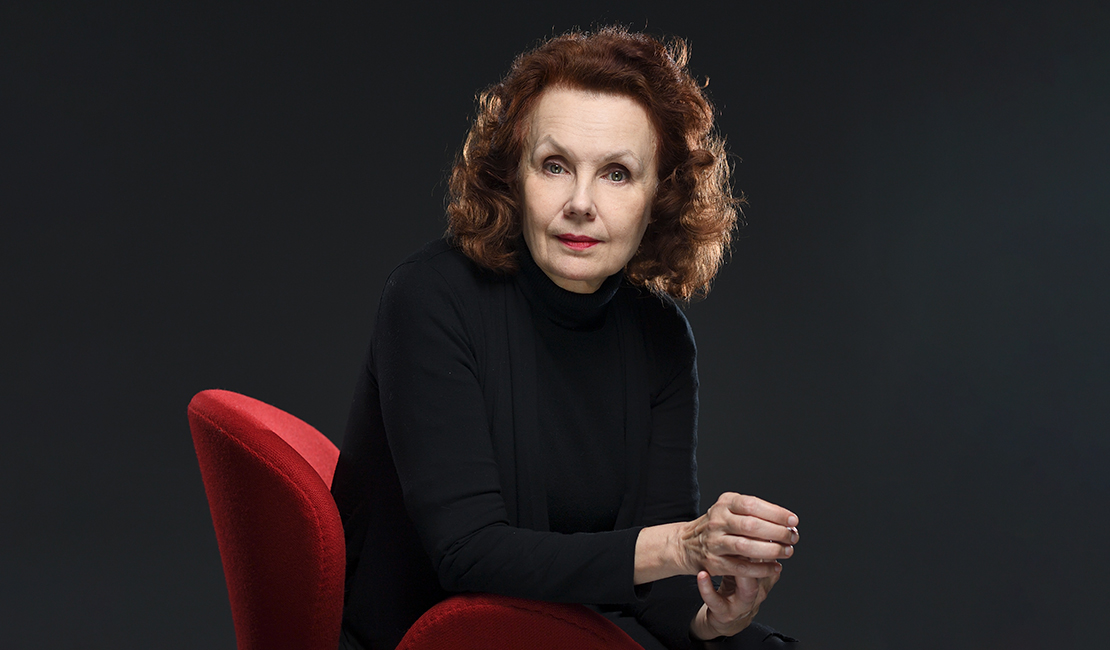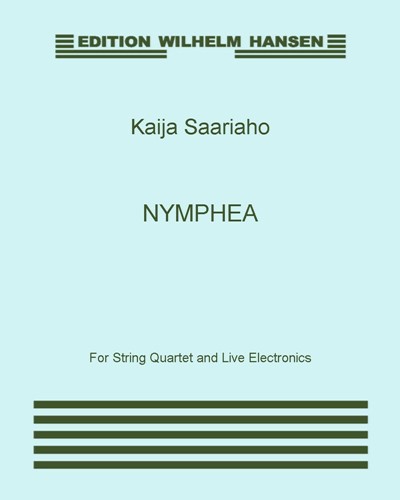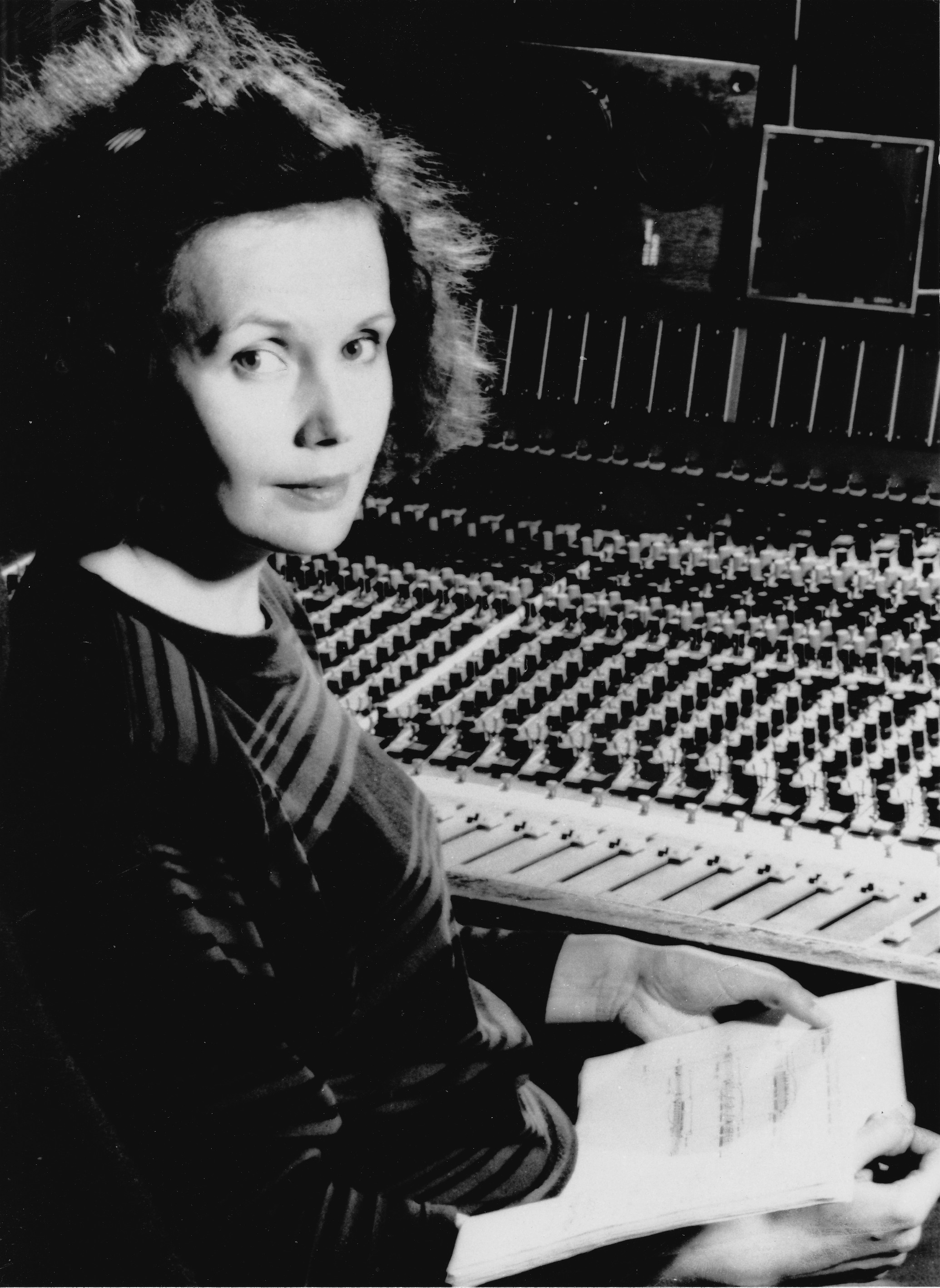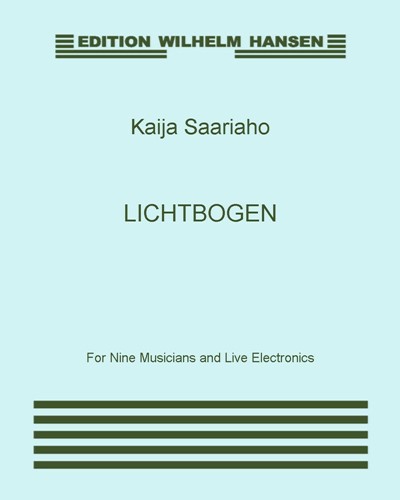Sound and Light: Kaija Saariaho at 70

Kaija Saariaho will celebrate her 70th birthday on October 14, 2022. For decades, Kaija Saariaho has been one of the greats of her craft, and since the turn of the millennium, her work has found resonance worldwide. All with good reason since she has produced a comprehensive oeuvre ranging from opera to solo pieces, in which individual expression and supra-personal expressiveness, intuition and reason, tradition and innovation are combined in an exemplary way. On October 14, 2022 she will celebrate her 70th birthday, which offers us a joyous opportunity to look back over her remarkable achievements.
It is true that this oeuvre is deeply influenced by the experiences the composer had in her youth and childhood in Finland, but as often as personal experiences or specific images of nature trigger her creative work, they are abstracted and transformed in the compositional process. Saariaho's music opens up associative spaces that go far beyond the original sources of inspiration and is thus able to captivate audiences far beyond those who follow new music.
The suggestive power of her works is not least due to the fact that Saariaho understands sound as the primary category of composition, entirely in the spirit of French spectral music, to which she turned in the early 1980s and which gave her important stimuli that continue to have an effect today. In particular, this includes a scientific investigation of musical sounds and in turn transforming the resulting sound analysis into living music. Analytical systematics and creative fantasy do not form a contradiction in this process but permeate and merge with each other.
Browse Wise Music's new interactive booklet, highlighting Saariaho's key works ahead of her 70th birthday in 2022
In her work, Saariaho uses the manifold possibilities of the computer and provides a coexistence of instrumental, live-electronic and synthetic sounds - whereby she is less interested in the contrasts than in the transitions between these sound worlds. The use of new technical means, however, is never an end in itself for her but is always in the service of her very own sound imagination, which reaches across the entire spectrum from the remembered archaic to the imagined future, thus bridging the ages.
I hope that performers and listeners alike take this welcome opportunity of her upcoming anniversary to explore her important oeuvre more closely and also to perform her lesser-known works. The manuscripts and creative documents preserved in the Paul Sacher Foundation (Basel) can provide researchers with deeper insights into the artist's compositional workshop. Both Wise Music Classical and the Paul Sacher Foundation are proud of their association with Kaija Saariaho and hope that the music world will make ample use of these opportunities.
Felix Meyer
Director, Paul Sacher Stiftung
"Kaija Saariaho is one of the monumental composers of our time… the powerful presence of her music over the years has been particularly important as a role model for younger generations, not least for younger women in music."
Anna Thorvaldsdottir
SOUND
Saariaho's music is steeped in the cutting-edge research of Europe’s leading innovative musical institutions. Following her studies at the Sibelius Academy in Helsinki, she continued in Freiburg with Brian Ferneyhough and Klaus Huber, at the Darmstadt summer courses, and, from 1982, at the IRCAM research institute in Paris.
At IRCAM, Saariaho developed techniques of computer-assisted composition and acquired fluency in working on tape and with live electronics. This experience influenced her approach to writing for orchestra, with its emphasis on the shaping of dense masses of sound in slow transformations. Significantly, her first orchestral piece, Verblendungen (1984), involves a gradual exchange of roles and character between orchestra and tape. Before coming to work at IRCAM, Saariaho learned to know the French ‘spectralist’ composers, whose techniques are based on computer analysis of the sound-spectrum. This analytical approach inspired her to develop her own method for creating harmonic structures, as well as the detailed notation using harmonics, microtonality and detailed continuum of sound extending from pure tone to unpitched noise
YouTube: Spectralism - a short introduction to spectral music
Her work in the 1980s and 1990s was marked by an emphasis on timbre and the use of electronics alongside traditional instruments:

Nymphéa (1987) 18 mins
String quartet and electronics
In Nymphéa (Water lily, 1987) for string quartet and electronics, Saariaho's aim was to broaden the colours of string instruments and create music by contrasting limpid, delicate textures and violent, shattering masses of sound. The basis of the harmonic structure is provided by cello sounds that she analysed with the computer, through the use of some personal computer programs. The musical material goes through rhythmic and melodic transformations as the motifs are gradually converted from a trill into arpeggios, or unisono rhythms into multilayered micropolyphony. The electronic component of the piece consists of live transformations of the string quartet's sounds in the concert.
The composer contemplated the symmetrical structure of a water lily, yielding as it floats on the water, transforming. Different interpretations of the same image in different dimensions; a one-dimensional surface with its colours, shapes, and, on the other hand, different materials that can be sensed, forms, dimensions, a white water lily feeding on the underwater mud. A poem by Arseny Tarkovsky (the cineast Andrei Tarkovsky's father) forms part of the sonic material during the composition appearing gradually, first in separate phonems whispered by players, adding thus a vocal colour to the palette of string sounds.
'From the very beginning, my work has sought to unify material and form. I don’t know why, but I feel like I have to reinvent the form for each new piece. The idea of taking a predefined form and saying, “Okay, let’s write a sonata or compose something according to a classical, predefined form”—it’s just not possible with my music. It can’t survive like that; it would be dead before it was even born! Every piece of music must live its own life because each one is utterly it's own. Of course, from one work to another, I might come up with similar solutions in form, given that it’s my style. But I either use them consciously or sometimes I go against my intuition because I feel like you have to open up the possibilities, try new things. But to come back to material and form, once again it’s like the five senses—for me, there’s a back-and-forth between thought and intuition when composing, which makes it impossible to separate the two.'
Kaija Saariaho in conversation with Clement Mao-Takacs
Du Cristal (1989) 19 mins
4(4pic,3afl).3.3(Ebcl)+bcl(cbcl).2(cbn)/4.3.2.1/timp.4perc/hp.pf+syn/str(16.14.12.10.8)/electronics
Saariaho took her title from a book by the French writer Henri Atlan, 'Entre le cristal et la fumée', and for her, it signifies the way the same acoustic material is developed in sharply different ways in the two pieces, the turbulent energy and almost expressionist outbursts of Du Cristal subsiding into the capricious, playful double concerto of [the other work in the diptych]...à la fumée.
None of Saariaho's major works to date is without some kind of electronic element, and the presence of the synthesizer is significant in the light of Saariaho's remark that she tends to the orchestra itself 'as if it was a huge synthesizer'. The standard form of electronic synthesis is 'additive' - that is, each sound is created by piling innumerable pure tones upon each other. Transferred to the medium of the orchestra, this means that it is as if each individual instrument were analogous to a pure tone in a synthesizer, merely a tiny part of a large, slowly evolving mass of sound. Thus there is no polyphony, nor any melody in the conventional sense, although the music is frequently lyrical in its gestures and the activity within the textures may momentarily suggest polyphony; the important thing to follow is the overall drift of the orchestral mass, and to relate the individual details to that. It's an approach which owes something to the dense, multi-layered orchestral works of György Ligeti, such as Atmosphères and Lontano, as well as to the so-called 'spectral-music' of French composers Tristan Murail and Gérard Grisey, all of whom Saariaho has acknowledged as influences on her music; but her own style is nevertheless thoroughly personal and has distinctly brooding, 'Northern' character quite distinct from any of the afore-mentioned.

Nuits Adieux (1991) 10 mins
SATB choir and electronics
Nuits, adieux is about singing, breathing, whispering, night time, farewells. It consists of ten passages, five of them entitled Nuit, five remaining Adieu. Two different text sources are used for these two kinds of passages: extracts from Jacques Roubaud's book 'Echanges de la lumière' ('nights') and a fragment from Honoré de Balzac's novel 'Séraphita' ('farewells'). The voices are amplified and processed during the performance. Each singer is using two microphones. One of them is used as a general mean of amplification and is sent then to different, changing processing programs (eg. early reflection, gate reverb, delay). Audibly the most dominant processing is, nevertheless, done with the material sung into the second microphone. Here Saariaho employs a reverberation, in which the reverb time is controlled by the dynamic changes of the voices. In general, this time is set to be relatively long, and the audible result is a continuously changing texture, which forms a background for the more present events sung into the first microphone.
LIGHT
Whilst many are quick to associate Kaija Saariaho’s music to themes of nature, the composer attributes greater importance to the influence of light on her work: ‘changes in sunlight throughout the year are so drastic that they affect everyone. You can’t escape its influence. And because of this experience—which is so physical, we [Fins] feel it in our body...for me, its importance comes from the experience of living in the “period of darkness”—there’s a very specific term for this in Finnish: kaamos—all the while retaining hope that the sunlight will start strengthening again until it is fully restored.’ Indeed, the influence is not only apparent from the very titles of her works (Lichbogen, Notes on Light, Laterna Magica) but her choice of tempo markings and performance instructions: luminous, translucent, brilliant, sparkling, bright, etc. We explore some of these formative works below:

Lichtbogen (1986) 17 mins
1(pic,afl)0.0.0/0000/perc/hp.pf/str(11111)/electronics
The name Lichtbogen stems from Northern Lights which Saariaho saw in the Arctic sky when she began work on this piece. The movements of the immense, silent lights inspired the first ideas concerning the form and language for the piece. Lichtbogen was the first time she worked with a computer in the context of purely instrumental music. Special harmony and rhythm were worked out with two different tools in IRCAM. For harmony, the CRIME system developed by Claudy Malherbe and Gerard Assayag: the harmonic material was created by analysing short transitions played with a cello, starting from artificial harmonic sound and ending to complex 'multiphonic' sounds. The analyses were made by selecting many small windows in the different parts of the sound. From the results, Saariaho reconstructed the transitions and made harmonic processes, which are often combined with the original playing manners of the analysed sound so that harmony and timbral thinking stem from the same source.
For the rhythm, Saariaho used a network for programmes which she realised with Xavier Rodet in the FORMES environment. These programmes allowed her to construct interpolations and transitions for different musical parameters. The rhythmic interpolations here are created between different musical patterns by using circular lists, in which every time when repeated, values have changed, and thus modified the general character of the pattern. The calculated results were then transcribed with approximations, which allows them to be playable to musical notation.
I don’t actually try to find metaphors; they come naturally. It’s true that I’m very sensitive to light and that I’m inspired by it. Sometimes I genuinely do think about orchestra in terms of light. When I picture certain orchestrations, I make instant connections with light. I feel like the senses are mixed together, but I’m not interested in analysing why or how that may be. What matters most is that it works and that it inspires me. At any rate, for a long time, I’ve believed that the senses are not compartmentalized, but are in fact far more connected than we realize.
Kaija Saariaho in conversation with Clement Mao-Takacs
Notes on Light (2006) 30 mins
4(3&4=pic&afl).2.2+bcl.2(2=cbn)/4000/timp.4perc/hp.cel.pf/str
At first sight Notes on Light with its five movements doesn't quite resemble the average cello concerto. However, with a closer look I soon found the elements that I like to think make a great concerto: the relation of soloist and orchestra goes through many very different situations. The cello is given the chance to show its full versatility. When the soloist has important things to say, the orchestra gives it space and on the other hand, the orchestra also gets its moments to lift the music up into exuberant colours…
Two intervals of a semitone are important mottos of the piece: the first is a slide down from F-sharp to F-natural which starts the piece and to which one returns from different paths along the concerto. The second is a rising figure of C-sharp to D-natural, which often interrupts the action and stops the soloist. These two motives seem to be even stronger landmarks than any melodic element. In the last movement, the single note of F-sharp proves to be the centre of the whole work.
Read the full programme note by Anssi Karttunen
Laterna Magica (2008) 20 mins
3(afl).3.3.2/6.4.3.1/2timp.3perc/hp.pf.cel/str
Laterna Magica ('The Magic Lantern') alludes to the autobiography of the same name by film director Ingmar Bergman, which caught the composer's eye after many years whilst she was tidying my bookcases in autumn 2007. 'In time, as I read the book, the variation of musical motifs at different tempos emerged as one of the basic ideas behind the orchestral piece on which I was beginning to work. Symbolising this was the Laterna Magica, the first machine to create the illusion of a moving image: as the handle turns faster and faster, the individual images disappear and instead the eye sees continuous movement.'
Musically speaking, different tempos underline different parameters: the rhythmic continuity is accentuated at relatively fast tempos, whereas delicate shades require more time and space for the ear to interpret and appreciate them. As Saariaho contemplated the work's tempos, rhythms with different characters became a major part of the piece’s identity: a fiery dance-rhythm inspired by flamenco, a shifting, asymmetrical rhythm provided by speech and an accelerating ostinato that ultimately loses its rhythmic character and becomes a texture. In contrast to this, there emerged music without a clear rhythm or pulse. This material is dominated by strongly-sensed colourful planes and airy textures, such as the unified colour of six horns, which divides the orchestral phrases. This use of horns points to Bergman’s film 'Cries and Whispers', in which the scenes are often changing through sequences of plain red colour…
Published February 2021
All non-attributed programme notes adapted from Kaija Saariaho's own programme notes, available in full via their work links. Archive images courtesy of Kaija Saariaho.
Extracts from Kaija Saariaho's interview with Clement Mao-Takacs first published in musicandliterature.org in 2014, fully available here.
